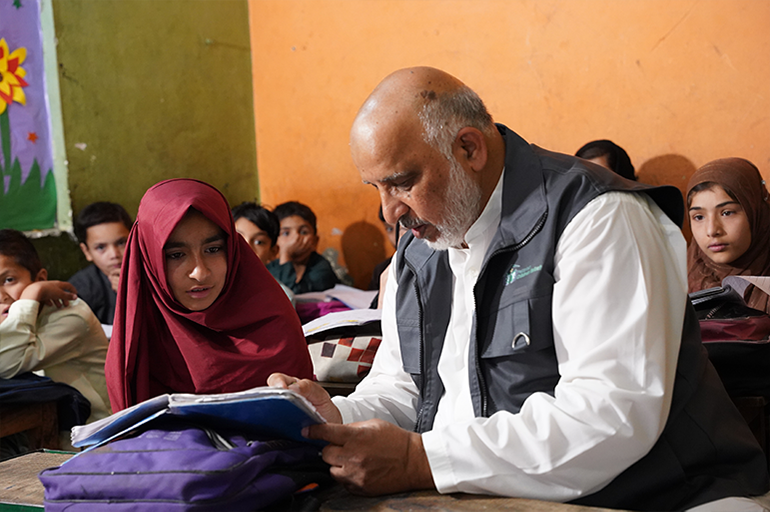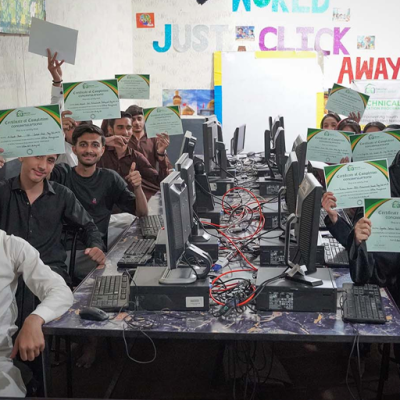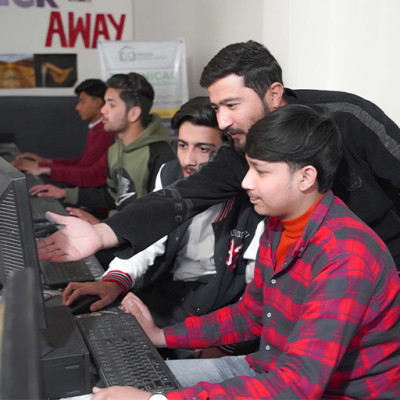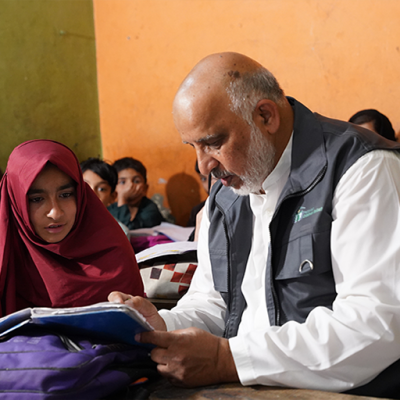In Pakistan, millions of children spend their childhoods earning a living rather than learning in classrooms. Despite the country’s commitment to international child-rights conventions, poverty, cultural pressures, and lack of educational access continue to push young boys and girls into labor. These children sacrifice not only their education but also their health, dreams, and future.
This article explores the harsh realities of child labor in Pakistan, the barriers preventing children from enrolling in school, and the urgent need for solutions that help children transition from labor to learning. By highlighting successful initiatives and sustainable strategies, we aim to support efforts that create long-term educational opportunities for every child, especially those who need education support the most.
The Reality of Child Labor in Pakistan
Scale and Impact
Child labor remains one of Pakistan’s most pressing challenges. It is estimated that over 12.5 million children aged 5–14 are currently engaged in work many in hazardous sectors like agriculture, brick kilns, and workshops. These children often work long hours for little pay, forfeiting their right to schooling and childhood in the process.
The negative impact extends far beyond missing school. These children face physical strain, exhaustion, malnutrition, and life-long health complications. Mentally, they are more susceptible to depression, stress, and emotional trauma. Instead of playing, learning, or imagining a bright future, they bear adult responsibilities far too soon.
Barriers to Education for Working Children
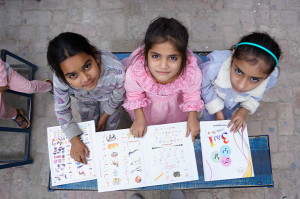
Economic Pressure & Family Realities
For many low-income families, every earning hand matters. When food and survival take priority, parents often feel they have no choice but to send their children to work. With limited financial safety nets, education can feel like a luxury rather than a necessity.
This is why programs that help families and support a child’s education in Pakistan play a vital role in breaking this cycle.
Cultural Perceptions
In some areas, education especially for boys who are expected to work or girls expected to marry early is undervalued. Families may believe schooling does little to improve livelihood opportunities. Changing mindsets requires awareness programs, community leadership, and proven success stories.
Geographical & Infrastructure Barriers
Many underdeveloped rural communities lack basic educational facilities. Even where schools exist, they may have no trained teachers, books, or safe learning spaces. To address this, basic learning centers in Pakistan have become essential in reaching children who otherwise have no access to education.
Community, Awareness & Support Programs
Role of NGOs & Local Leaders
Community-based organizations are crucial in shifting attitudes toward education. Through awareness campaigns, parent counseling, and grassroots support, they help families understand how education can open doors to employment, dignity, and stability.
Awareness & Advocacy
Campaigns across media, mosques, and rural centers encourage families to send children to school. Public awareness is turning the conversation from “children need to work” to “children need education for a better future.”
Policy & Program Recommendations
Strong Enforcement of Child-Protection Laws
Pakistan has laws against child labor, but enforcement remains weak. Strengthening monitoring systems and training law-enforcement can ensure that these laws protect children effectively not just exist on paper.
Financial Incentives for Families
To make schooling financially viable, governments and organizations should expand stipend programs, school meals, and school supplies donation in Pakistan initiatives. When families receive support, they are more willing to donate education for children in Pakistan by allowing them to attend school instead of working.
Holistic Reintegration Into Education
Counseling & Social Support
Children returning to school often carry trauma and need emotional support. Empowering them through counseling, peer-support circles, and teacher training fosters confidence and helps them adapt.
Vocational & Technical Pathways
Not all children follow the same learning journey. Integrating vocational programs with formal learning creates opportunities for youth to acquire practical skills while receiving an education increasing future employment prospects.
Sustainable Path Forward
Long-term success depends on collaboration between government, NGOs, communities, and global partners. Regular monitoring and evaluation of education programs ensure resources reach the children who need them most.
A long-term commitment is essential. The solution isn’t temporary charity — it’s sustained effort that guarantees quality education for underprivileged children and ensures access to education for poor children across Pakistan.
Conclusion: A Future Where Every Child Learns
Child labor will only end when children have real, accessible alternatives — and education is the most powerful alternative of all. By improving schooling options, increasing parental awareness, and strengthening financial support programs, Pakistan can help children trade labor for learning and build a future filled with opportunity.
Organizations like Pakistan Children Relief (PAKCR) are leading this mission through their education support program in Pakistan, offering learning opportunities, school supplies, and safe study environments for children. Their basic learning centers in Pakistan help children who never had the chance to attend school — giving them a fresh start. When families and donors come together to support a child’s education in Pakistan, we move closer to ending the cycle of poverty and empowering future generations.
Together, we can ensure that every child has a classroom instead of a work site — and a bright future instead of hardship.
Frequently Asked Questions
What are the main causes of child labor in Pakistan?
Poverty, lack of access to schools, cultural norms, and family financial pressure are the primary drivers.
How can working children be encouraged to return to school?
Financial support for families, flexible learning programs, and awareness initiatives help children transition from work to school.
What role do NGOs play in this cause?
NGOs raise awareness, provide learning centers, offer school supplies, and run education support programs to help children re-enter school.
How can the government reduce child labor?
By enforcing child-protection laws, improving school infrastructure, offering family incentives, and expanding rural education programs.

